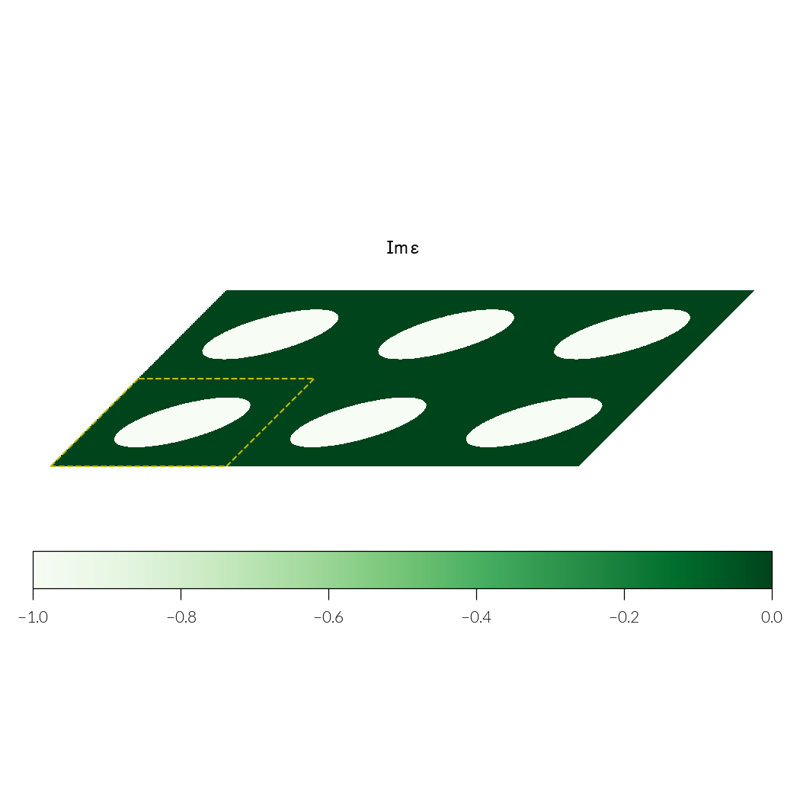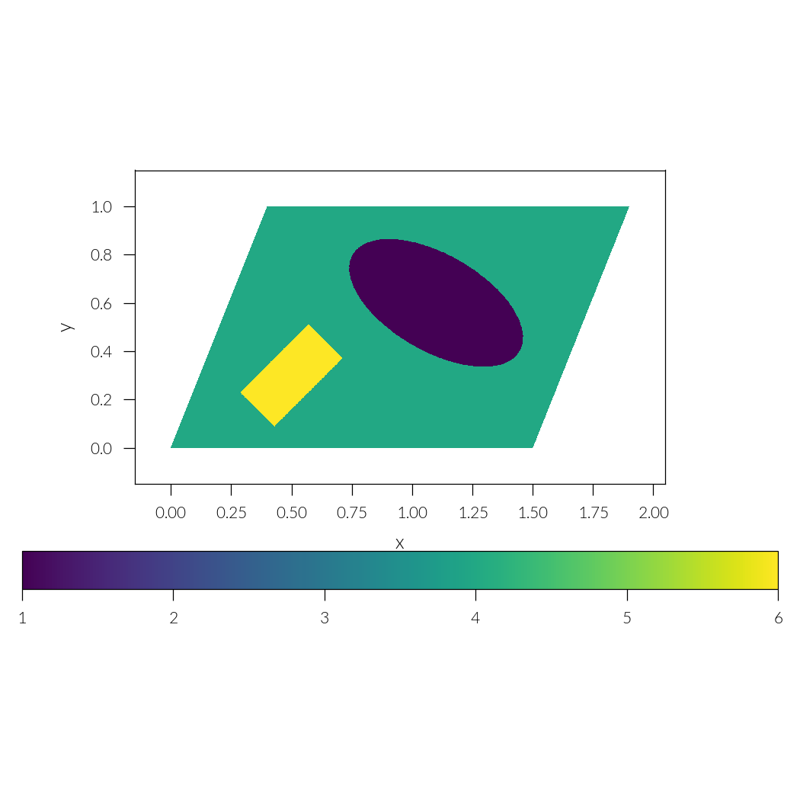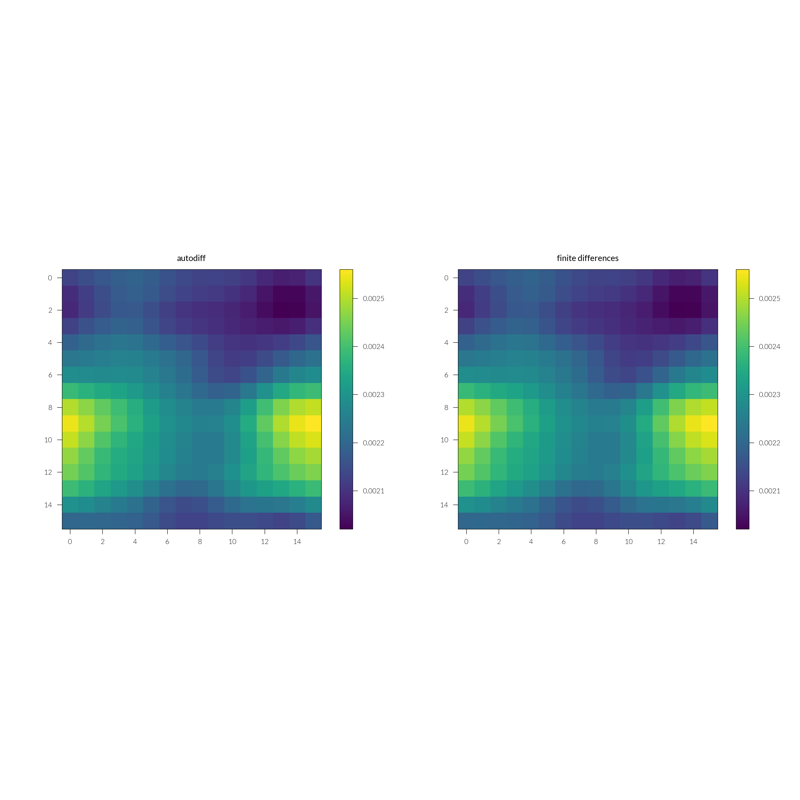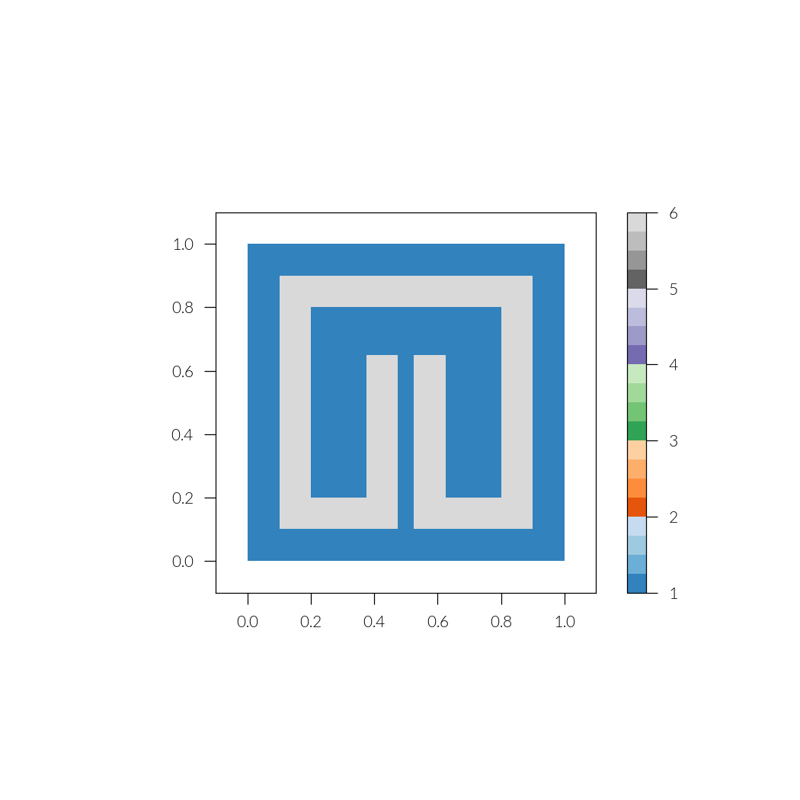Tutorials#
Basic Example#
This basic example demonstrates key features of nannos.
First import the package.
import nannos as nn
Create the lattice.
lattice = nn.Lattice(basis_vectors = [[1.0, 0], [0, 1.0]], discretization=2**9)
Define the layers. The thickness for the semi infinite input and output media is irrelevant.
sup = lattice.Layer("Superstrate", epsilon=1)
ms = lattice.Layer("Metasurface", thickness=0.5)
sub = lattice.Layer("Substrate", epsilon=2)
Create the permittivity pattern for the structured layer.
ms.epsilon = lattice.ones() * 12.0
circ = lattice.circle(center=(0.5, 0.5), radius=0.2)
ms.epsilon[circ] = 1
Define the layer stack as a list from input medium to output medium.
stack = [sup, ms, sub]
Define the incident plane wave.
pw = nn.PlaneWave(wavelength=0.9, angles=(0, 0, 0))
Create the simulation.
sim = nn.Simulation(stack, pw, nh=200)
Plot the unit cell.
p = sim.plot_structure()
p.show_axes()
p.show(jupyter_backend='panel')
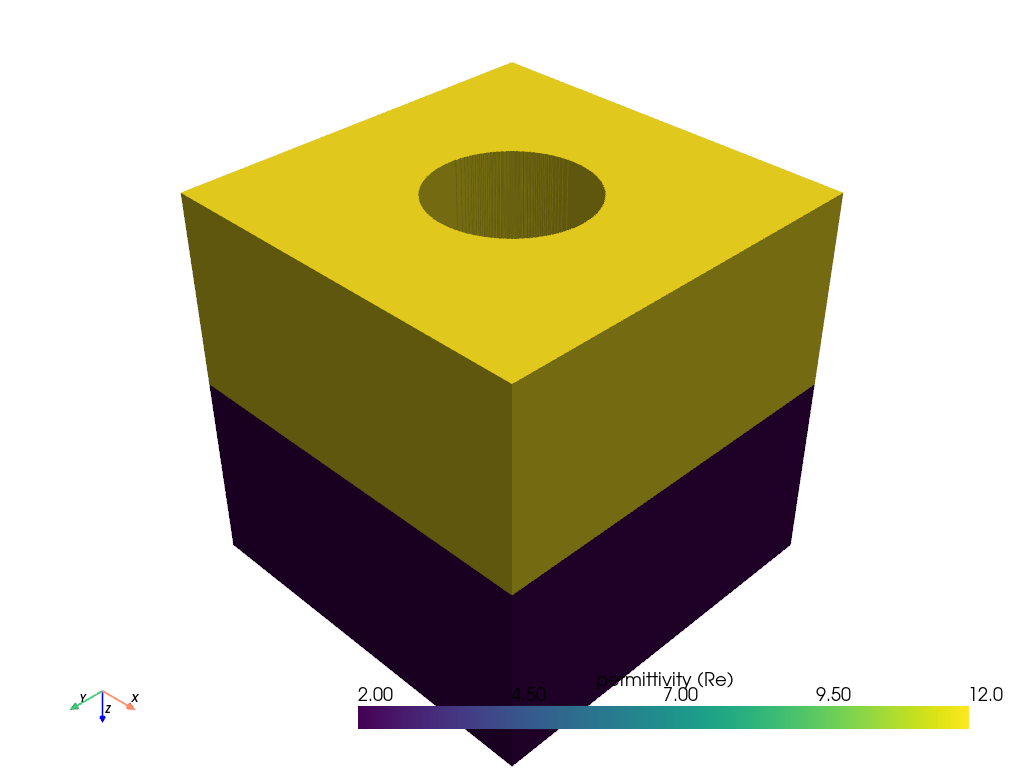
Compute the reflection and transmission:
R,T = sim.diffraction_efficiencies()
print("reflection: ", R)
print("transmission: ", T)
print("sum :", R + T)
reflection: 0.3271754877303663
transmission: 0.6728245122696275
sum : 0.9999999999999938

